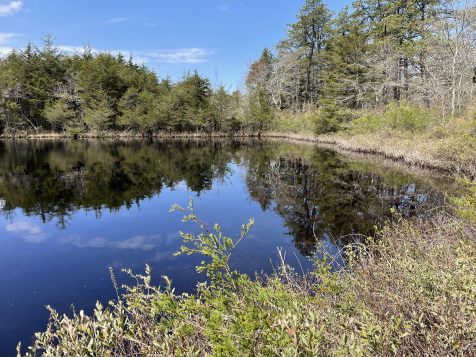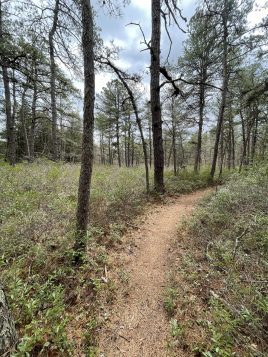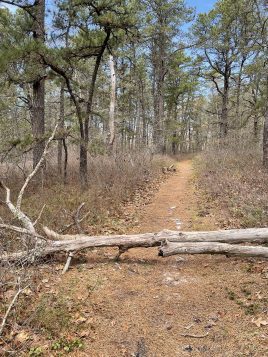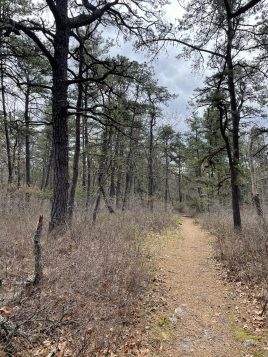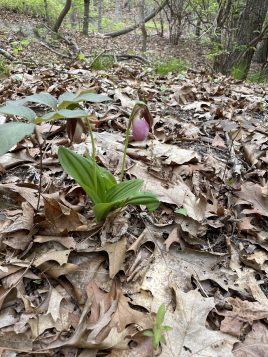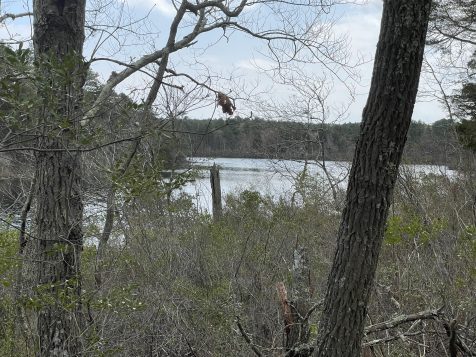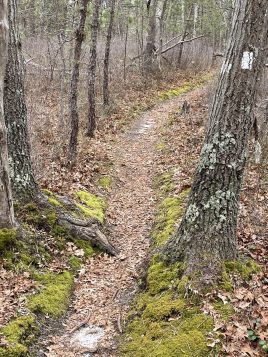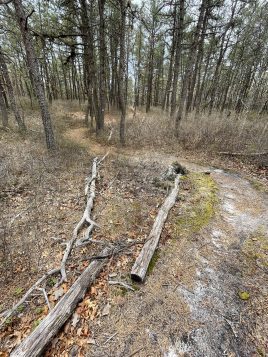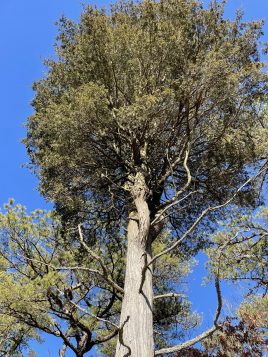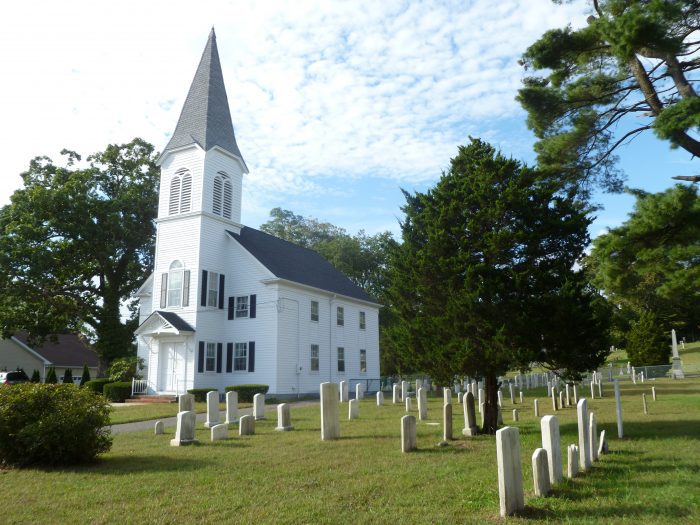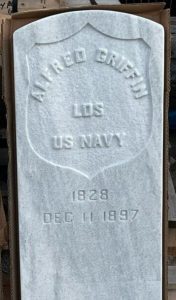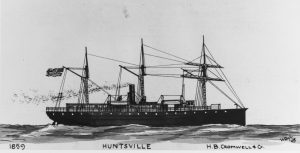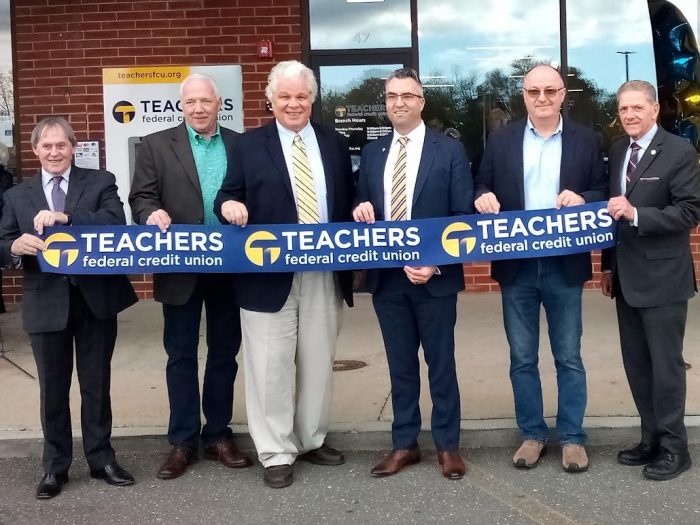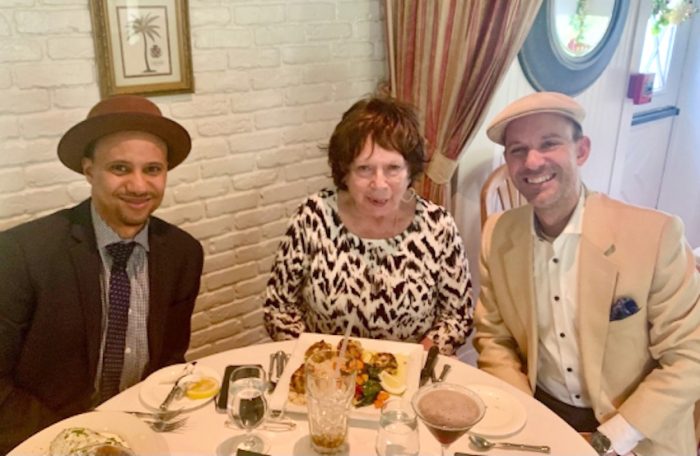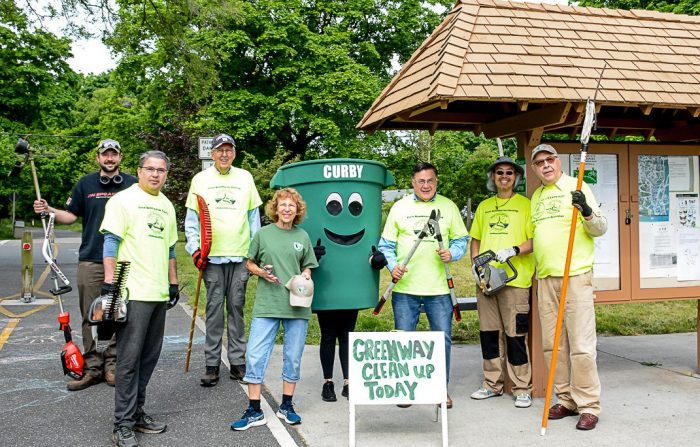By John L. Turner

It’s a warm Spring day and I’m relaxing on a bench on the edge of Swezey’s Pond within Cranberry Bog County Nature Preserve. Situated in western Southampton Town, about three quarters of a mile south of the Riverhead traffic circle, the preserve contains the remains of one of the larger commercial cranberry bogs that once prospered on Long Island.
The light is bright and the warmth most inviting, both for me and the eight painted turtles of various sizes that have scrambled up on two nearby logs. At first the water appears to be still but looking a little more closely I can see a current moving from right to left or from south to north. This water drains from Wildwood Lake about a mile to the south providing the base flow to the Little River, one of the four tributaries to the Peconic River.
At the far end of the pond a ghost white American Egret stalks the shallows and to its right, much closer to me, I hear the “phoe-be” call of a spring migrant Eastern Phoebe flitting around the spindly-spiraled top of an Atlantic White Cedar.
I am in the middle of the Pine Barrens, the largest intact forest remaining on Long Island, protected by state law after a long and intense legal battle that Newsday called the “War in the Woods.” It was a battle well worth fighting as the protection of the tens of thousands of contiguous pine-clad acres adds immeasurably to the quality of life of Long Islanders.
From a pragmatic point of view the Pine Barrens sits over the largest and cleanest groundwater supplies on Long Island with an estimated five trillion gallons of water contained in the saturated sands beneath the barrens. Also, the Pine Barrens is ecologically significant as it provides habitat to many hundreds of species of plants and animals, some with novel adaptations that enable them to survive wildfire and other harsh conditions of the ecosystem.
And like Manhattan’s Central Park, a destination for countless visitors and city dwellers, the Pine Barrens, Long Island’s Central Park, will, through time, become the same. Already used by many Long Islanders to hike, camp, bird, and canoe, the Pine Barrens will undoubtedly be visited by many more as it becomes better known.
Pitch Pine is the dominant plant of the Pine Barrens and provides half of the epithet — the Pine Barrens (the other half relates to the sandy, porous, and nutrient-poor soils that underlie the area). In many places, typically areas that have burned more frequently, it is the only tree found; in other areas of the Pine Barrens it shares the canopy with various oak species such as scarlet, white, and black oak.
Beneath the canopy, in the shrub layer, two dwarf oaks — bear oak and dwarf chestnut oak — form extensive thickets. These oaks are genetically dwarfed and even if their acorns are planted in soils rich in nutrients, the species will never obtain the height of our native tree oaks. Intermingled in these shrubby thickets are the heath species, such as black huckleberry, and early and late lowbush blueberries. On the forest floor where there’s ample sunlight you can find both common and striped wintergreen and the beautiful trailing arbutus.
In the wetlands a host of other plant species abound — water lilies in the open water of ponds and lakes to a number of rare plants growing in the shallow water near shorelines and along the sandy shorelines themselves — including several carnivorous plant species as bladderworts and sundews. Highbush blueberry rings many wetlands and fills small bogs. These wetlands provide habitat to turtles, frogs, toads, and salamanders while ovenbirds, scarlet tanagers, whip-poor-wills, pine warblers, and may other songbirds fill the forests and wetlands with song.
Fire has long played a dominating role in shaping the character of these pine dominated forests, having swept through the barrens for thousands of years. Many of the plants and animals have adapted to fire with pitch pine having thick bark; in the unique and globally rare dwarf pine plains the dwarf pines depend upon fire to open their cones which remain resolutely closed in fire’s absence.
It’s no accident that nearly one hundred square miles of the Pine Barrens has been permanently preserved. Were it not for the direct and intensive intervention of the Long Island Pine Barrens Society, both in the courts and in the court of public opinion, the Pine Barrens would, no doubt, have succumbed to development. But in a classic David (the Society, other conservation organizations) vs. Goliath (municipalities and wealthy, well-heeled developers) contest, the environmental community won with the passage of the 1993 Pine Barrens Protection Act that established the 105,000 acre Central Pine Barrens including the 55,000 acre Core Preservation Area in which development is not allowed.
All Long Islanders will long be the beneficiaries of the Pine Barrens being preserved and this preservation effort has a unique aspect to it: it ensures in a bi-county region, cheek-to-jowl with one housing subdivision after another, surrounding industrial parks, strip shopping centers and large malls, where 2.7 million Long Islanders work, live, and play, there will always be wildness available — a wild character where if you’re positioned in the hollow of the morainal hills in Manorville you will hear no human sounds, where at night the pin prick light of stars shine amidst the inky blackness and from which the rhythmic calls of the whip-poor-will or deep hoots of the great horned owl can still be heard. It is a landscape where, in so many places you can hike on meandering trails for many miles and see no one, or evidence of anyone save the footprints of fellow hikers seeking the same solitude.
A resident of Setauket, John Turner is conservation chair of the Four Harbors Audubon Society, author of “Exploring the Other Island: A Seasonal Nature Guide to Long Island” and president of Alula Birding & Natural History Tours.

